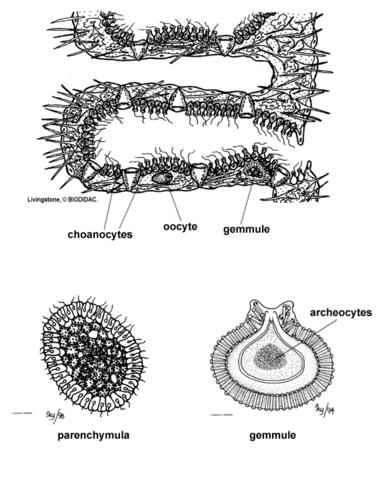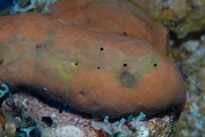Reproduction
 Plakortis
simplex can reproduce by
means of both sexual and asexual
reproduction. During sexual
reproduction, choanocytes are converted into
spermatocytes. The zygote egg
experiences repeated cleavage to form a
parenchymula larva. This
parenchymula larva is essentially a
collection of large cells on the inside
which are enclosed by smaller flagellated
cells. This motile larva swims
through the central cavity and is ejected by
the exiting current.
Plakortis
simplex can reproduce by
means of both sexual and asexual
reproduction. During sexual
reproduction, choanocytes are converted into
spermatocytes. The zygote egg
experiences repeated cleavage to form a
parenchymula larva. This
parenchymula larva is essentially a
collection of large cells on the inside
which are enclosed by smaller flagellated
cells. This motile larva swims
through the central cavity and is ejected by
the exiting current.
Asexual reproduction by P. simplex is achieved by means of budding. The cells of P. simplex are totipotent, meaning that a single cell can divide and differentiate into any of the cells found in sponges. During budding, sponges release fragments of themselves called gemmules. Gemmules are aggregates of these totipotent cells which have a coat of spongin that protects them. These aggregates of cells are released from the surface of the original organism to form a new organism when conditions are right for them to germinate.
For information on interactions of other species with P. simplex click here.
